GOA ART & CULTURE
Goa, also referred as the ‘Rome of East’ is one of the most happening and modern tourist destination in india with heritage goan culture and tradition. Colonized by Portuguese for 450 years, cultural heritage of Goa consists of numerous goa churches, temples and mosques. Moreover, Goa’s exotic beaches that sprawl over wide and soft sands as well as the sea food of Goa are much admired and liked by people visiting Goa from different places. Goa’s cultural richness and vividness is well reflected through Goan folk dances, Goan folk culture and Goan songs.One also gets charmed by a series of Christian monuments that reveal some of the most attractive architecture.
A lot has been inherited from Portuguese in the form of attire which is western including skirts worn by women. Be it the western music including jazz, techno as well as western classic or western cuisines including the amazing sea food, everything in cultural Goa has great western influence. People here are extremely modern and have their inclination towards contemporary advancements. It’s been 40 years since the Portuguese left Goa and since then Goa has turned itself to being one of the most westernized and dashing places in India, which is much frequented and loved by tourists from across the world.
Numerous popular singers came up from Goa to please the minds and hearts of music lovers. Singers such as Emiliano D’cruz, Prince Jacob, , Souza Boy, M.Boyer, Alfred Rose, Kid Boxer, Rosario Rodrigues, Tony King and J. B. Rod. Goa also showcases buzzing nightlife to you. Goans flock around exotic beaches or let the various restaurants go buzzing all through the night. Festivals as well are celebrated with great festive cheer.
And when it comes to scrumptious food, one gets a chance to taste mouth watering Portuguese, Konkan, as well as Bahamani cuisines that are more than enough to satisfy your taste buds. Goans love to eat fish curry with rice which serves to be their staple diet. In addition to this, Goans also like pork as well as chicken. In the monsoon season, fish is quite abundant, and therefore, Goans have galore of them. The most preferred and liked drink of the Goans is known as Feni, which is made mainly from coconut water.
Some of the popular sports that are played in Goa include bull fighting as well as football. Moreover, wonderful fairs and festivals such Seista, a popular Hindu festival, are also celebrated in Goa with much enthusiasm. Moreover, cultural Goa is found to be replete with diverse cultural faiths. The contemporary Goa is replete with numerous hotels and resorts that serve to be a comfortable and pleasant abode for people coming to Goa. Therefore, make it a point to visit Goa closely and get acquainted with its rich and stunning cultural heritage that adds to its overall charm among the people.
GOA MUSIC AND DANCES
GHODE MODNI
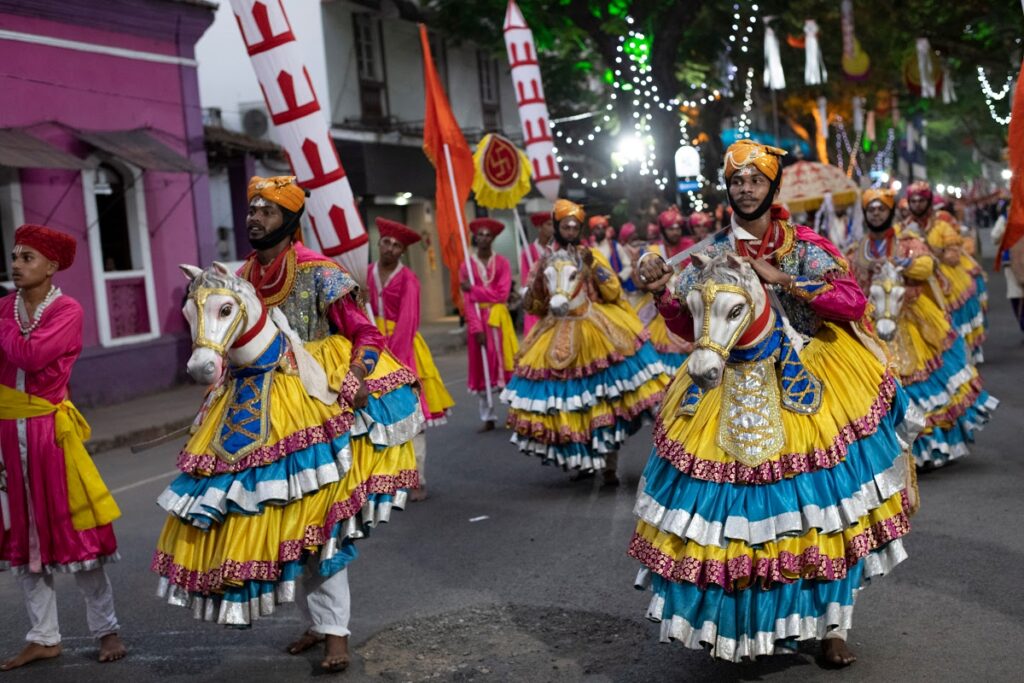
This is the name of a splendid folk dance that is mainly performed in Bicholim Taluka of Goa. The dances brangs back the memory of the great warriors in the past. The dancers swing around with dummy horses tucked to their waists. They carry swords in their hands showcasing bravery and at the same time they wear ‘ghungrus’. The background music is the music of dhol and tasha.
MANDO

Mando refers to the various love songs that are enriched by capturing each and every emotion. These are folk songs that came into existence with the Goan aristocracy. The starting of these songs reflect the sad state of mind but the rhythm they acquire in the end is named as dulpod. A blend of Indian and Western traditions can be found in these songs. The contemporary songs belonging to this category present varied and distinct emotions and therefore, they are difference from the old compositions such as bhajan, arti, dasarwadem, etc.
DEKHNI DANCE
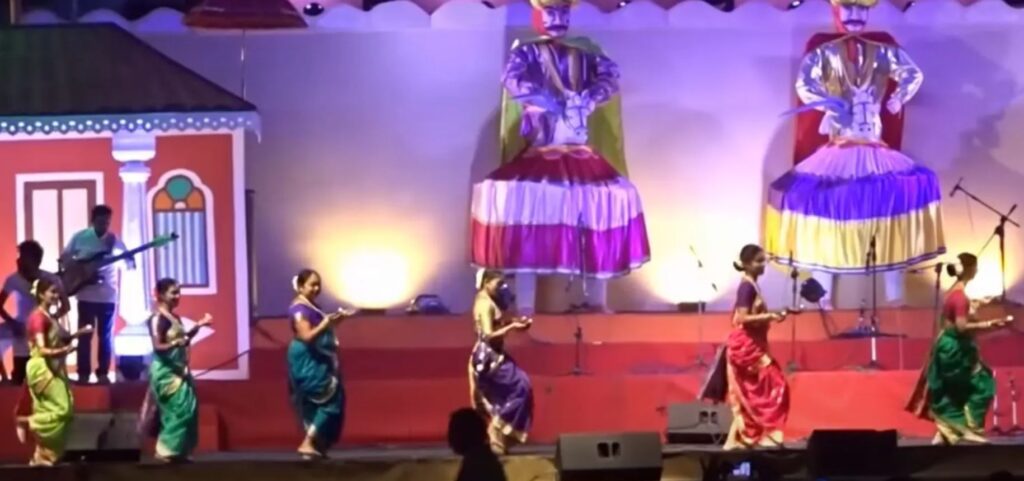
Dekhni is referred as a song cum dance. This is because the song has western bearings while the dance is of Indian form. It is only the women dancers who conduct this beautiful dance. A film producer got so enchanted by a popular Dekhni song that he made it familiar to every child of the country. Whenever this dance is performed, it is done with ghumat.
GOFF TALGADI AND SHIGMO
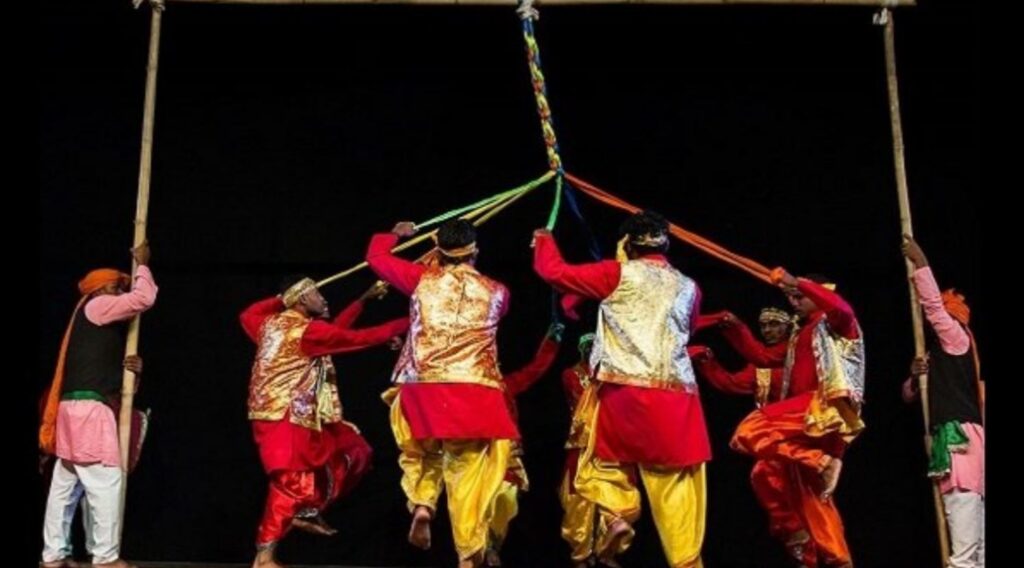
They are awesome and beautiful folk dances that are a part of Spring jubilation and they are basically performed to spread festive mood and happiness among the peasants. These dances are mainly performed by peasants of Goa. The peasants residing in Canacona Taluka perform the Goff dance. Goff consists of weaving of braid with various tints. The entire dance is a symbol of extreme discipline. Talgadi is also a folk dance that is performed on ghumat beats. It is quite identical to the dandiya dance of Gujarat. Shigmo is a dance that is performed by wearing colorful dresses and is done of the beats of dhol, tasha, cymbals, etc.
DHANGAR DANCE
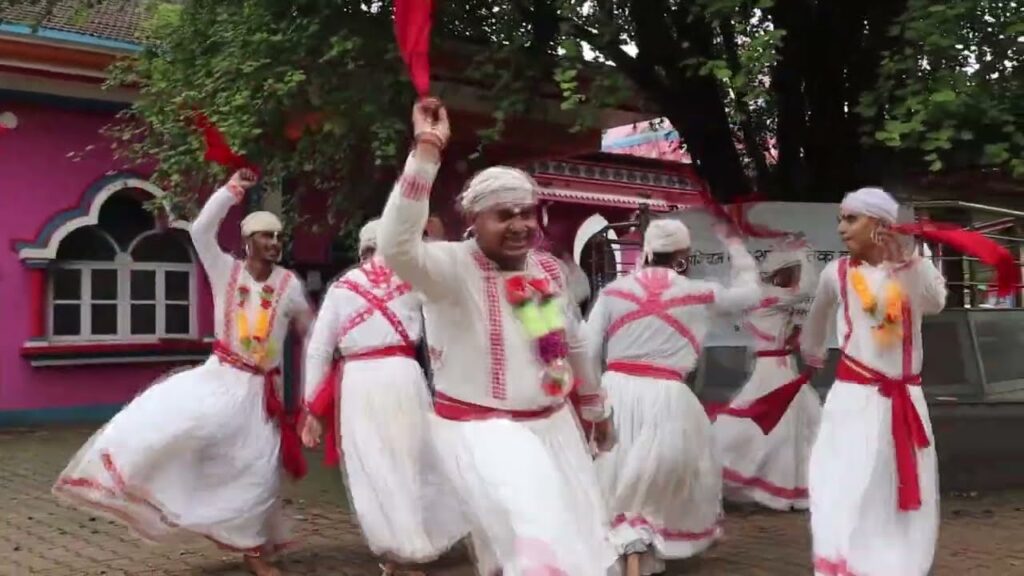
Hangars form a community of shepherds who worship a folk god named as Bira Deva. They believe in rituals and various celebrations. They celebrate with dances on dhol and flute. The dances they perform are usually dedicated to Shri Radha and Krishna. The costumes they were are named as Kathiawari white dress.
MUSSAL KHEL
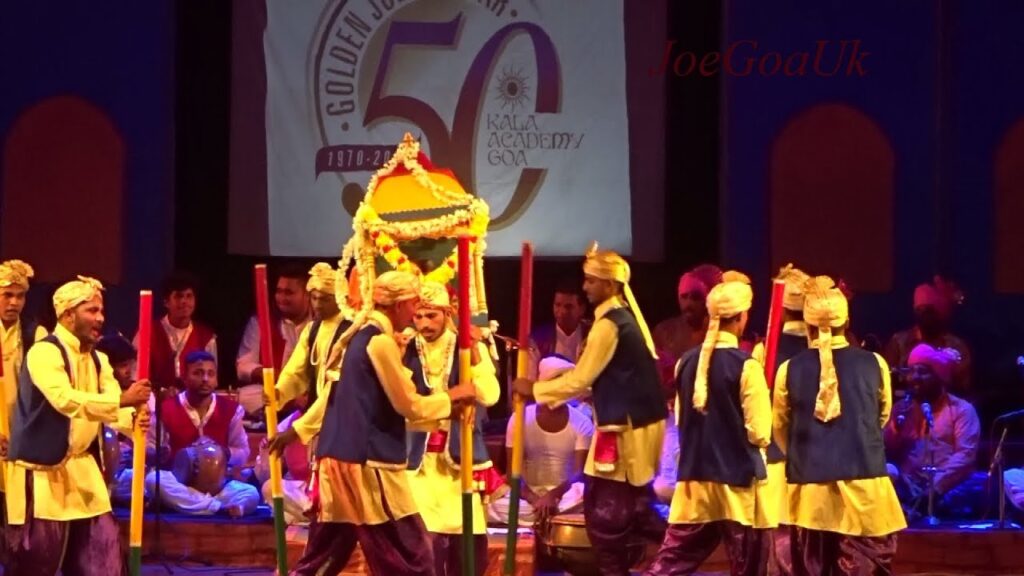
This is one of the folk inheritances that involve a song cum dance done in the praise of brave kings. An important aspect associated with this dance is that it is performed by Christians to praise a Hindu King. The main day when the dance is performed is the beautiful full moon day of falguna month of the Hindu calendar. It is basically performed by the Cholas of Chandor who were defeated by the Harihar of Vijaynagar dynasty.
ZAGOR

Zagor is a folk dance inherited from the Modern Marathi Theatre in Goa. It consists of two formsone of which belongs to the Pernni community, while the other belongs to the Christian Gawdas. Pernni Zagor concentrates on the philosophical topics based on the origin of universe. On the other hand the Christian Gawdas has been taken from the contemporary village life.
LAMP DANCE
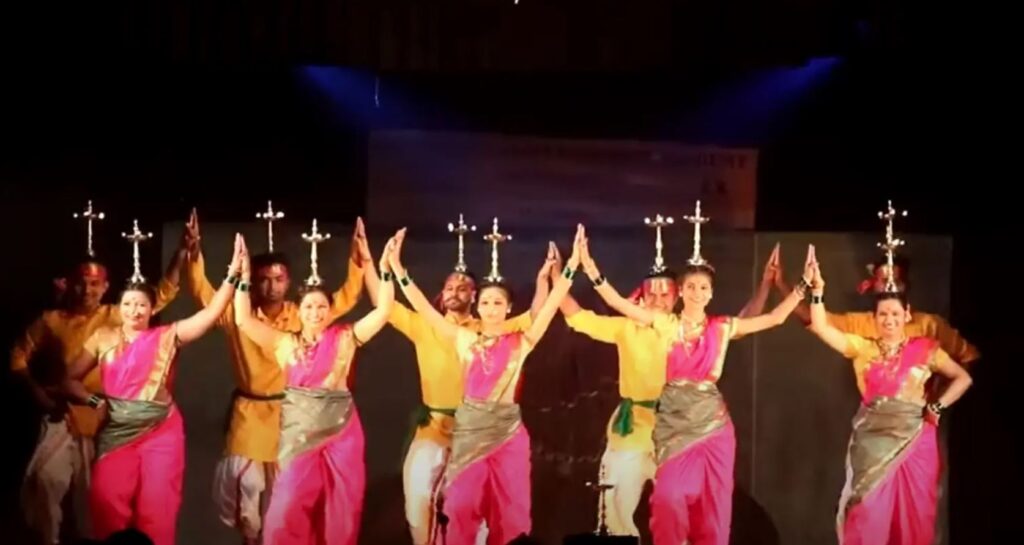
This kind of lamps uses brass lamps and it is unique and difficult since it is basically the art and skill of the dancer who keeps the lamp on his head and uses different body movements without affecting the position of the lamp. The time at which this dance is performed is the time of the Shigmo festival. The various instruments that are used for this kind of dance are Cymbal, Ghumat, Haronium, and Samel. The songs used are the traditional folk songs and the main regions wherein this dance is performed are the southern and central regions of Goa.
FUGDI AND DHALO
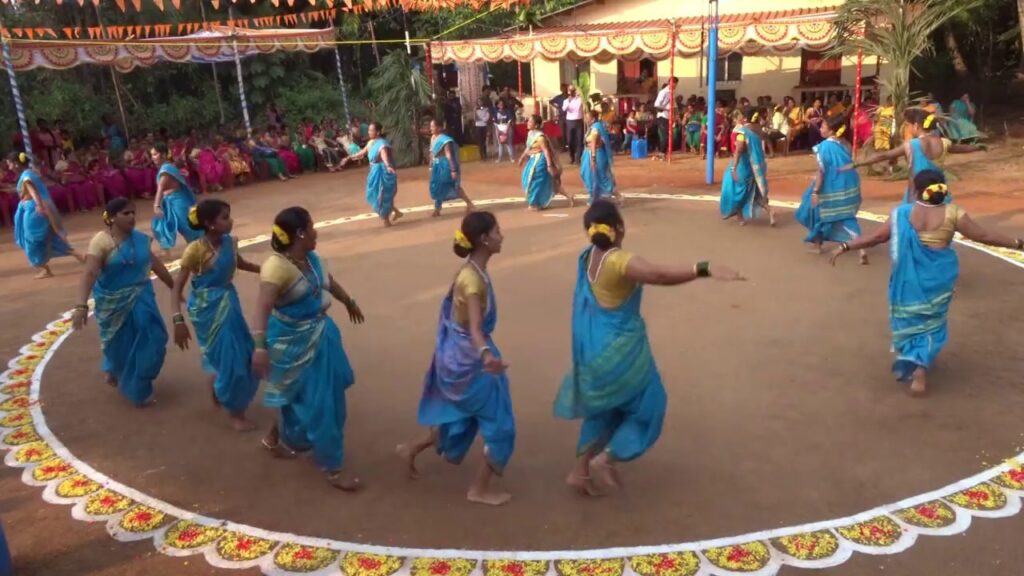
These folk dances are basically performed by women and they are quite common. The pace of Dhalo is slow while that of while that of Fugdi is fast. The pattern followed by the Fugdi dance is circular and in Dhalo a dozen of women dance having their faces in front of each other. Both these folk dances are performed on Marathi and Konkani songs.
VEERBHADRA
Veerbhadra is known as the son of Lord Shiva and he is also referred as the burning flame. This dance is actually performed on Dhalo Mand’s fifth day. The dance is performed while holding swords and and the instruments that are played include dhol and tasha.
KUNBI SONGS AND DANCE
Kunbi songs and dances is actually played by the primitive settlers in Goa that delineate ancient traditions. The songs belong to the Portuguese era and they are basically for the enjoyment of the dancers.
MORULEM
Morulem is a popular dance in which dancers dance on old and traditional songs to please their deities. The costume of the dancers includes flower garlands as well as peacock feathers adorning the heads.
ROMAT
This dance is accompanied by drum beats following a wonderful rhythm. The dancers dance amidst big banners, batons and umbrellas as well as festooned sticks.
TONYAMEL
This is afolk dance performed by peasants working on farms to celebrate the festivities of good harvest. The dance is performed in very vigorous and aggressive movements and with lots of noise and sound. The dance is a kind of homage paid to the Mother Nature and is quite fascinating.
SUVARI
This dance involves vibrant rhythms, music and taals that add a lot of enthusiasm to it. It is performed for religious festivals and related events. The instruments used in it are cymbals, ghumat, surt, shehnai and shamel. All through Goa, This dance is performed with much cheer.
